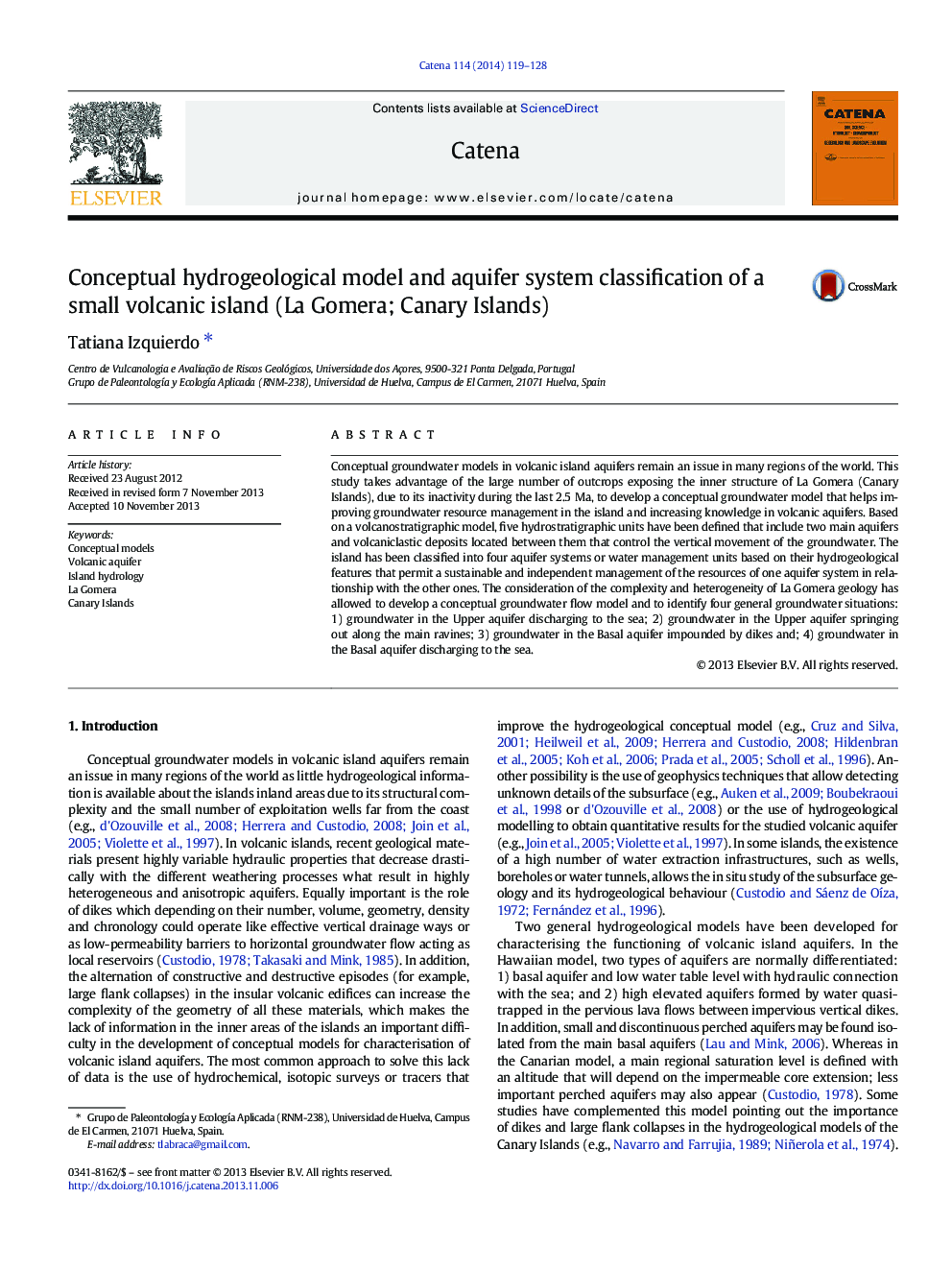| Article ID | Journal | Published Year | Pages | File Type |
|---|---|---|---|---|
| 4571497 | CATENA | 2014 | 10 Pages |
•A hydrogeological model is proposed for the small volcanic island of La Gomera.•Five hydrostratigraphic units are defined that include two main aquifers.•Volcaniclastic deposits play a key role controlling groundwater flow paths.•Four aquifer systems are defined to improve groundwater management.•Four general groundwater flow paths have been identified.
Conceptual groundwater models in volcanic island aquifers remain an issue in many regions of the world. This study takes advantage of the large number of outcrops exposing the inner structure of La Gomera (Canary Islands), due to its inactivity during the last 2.5 Ma, to develop a conceptual groundwater model that helps improving groundwater resource management in the island and increasing knowledge in volcanic aquifers. Based on a volcanostratigraphic model, five hydrostratigraphic units have been defined that include two main aquifers and volcaniclastic deposits located between them that control the vertical movement of the groundwater. The island has been classified into four aquifer systems or water management units based on their hydrogeological features that permit a sustainable and independent management of the resources of one aquifer system in relationship with the other ones. The consideration of the complexity and heterogeneity of La Gomera geology has allowed to develop a conceptual groundwater flow model and to identify four general groundwater situations: 1) groundwater in the Upper aquifer discharging to the sea; 2) groundwater in the Upper aquifer springing out along the main ravines; 3) groundwater in the Basal aquifer impounded by dikes and; 4) groundwater in the Basal aquifer discharging to the sea.
